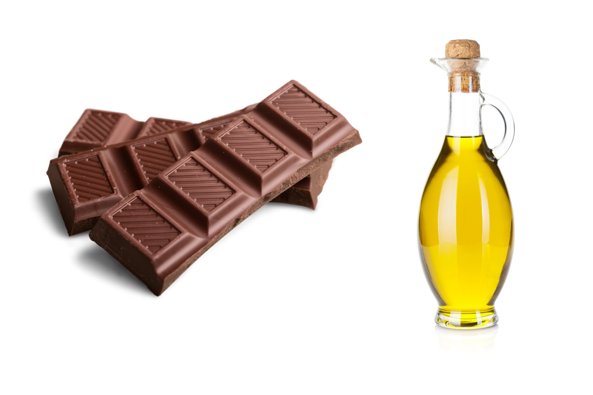
Germany’s Inflation Rises as Chocolate Prices Surge
Germany’s inflation accelerated to 2.4% in September, led by soaring chocolate prices, as olive oil and vegetable costs fell, official data confirmed.
Germany’s inflation rate rose again in September 2025, marking its highest level since December 2024, according to data released by the Federal Statistical Office (Destatis). The new figures reveal a mixed picture for consumers: while some goods such as chocolate and meat have become significantly more expensive, others — notably olive oil and vegetables — have fallen sharply in price. Economists warn that the upward trend in wholesale prices could keep inflation above target levels for the foreseeable future.
Inflation Rises for the Second Consecutive Month
After several months of easing earlier this year, inflation is once again climbing. In September, consumer prices in Germany increased by 2.4% year-on-year, confirming preliminary estimates published earlier by Destatis.
Ruth Brand, President of the Federal Statistical Office, said: “After the decline in inflation since the beginning of the year, the rate has now risen for the second month in a row.”
The largest increases were seen in the services sector, where prices rose 3.4% compared with 3.1% in August and July. Energy products, which had been exerting a dampening effect on overall inflation, are now showing less of a decline — falling only 0.7% in September, compared with 2.4% in August. This narrowing drop in energy prices has helped push overall inflation upward again.
Food Prices Show Contrasting Trends
Food prices rose 2.1% year-on-year, remaining below the overall inflation rate for the first time since January 2025. In August, food inflation had been slightly higher at 2.5%.
However, the averages hide stark contrasts across different product groups.
From September 2024 to September 2025, prices climbed sharply for:
- Sugar, jam, honey, and sweets (+6.5%)
- Fruit (+5.1%)
- Dairy products and eggs (+3.6%)
- Meat and meat products (+3.2%)
In contrast, some key staples have become significantly cheaper:
- Edible fats and oils (–3.2%)
- Vegetables (–2.1%)
The most striking changes were seen in two popular household items. Chocolate prices soared by 21.2%, while olive oil prices fell by 22.6% compared to the previous year.
The divergence reflects varying global supply dynamics: poor cocoa harvests in West Africa have sharply reduced supply, driving chocolate prices higher, while a rebound in Mediterranean olive production has eased the pressure on oil prices after two years of drought-driven scarcity.
Rising Food Costs and Declining Purchasing Power
Economists say consumers should brace for continued price pressures, particularly in food and daily essentials. While inflation is far below the double-digit levels seen in 2022, it remains above the European Central Bank’s 2% target, effectively eroding purchasing power.
“Higher inflation rates continue to reduce the purchasing power of households — people can buy less for the same euro,” said economist Cyrus de la Rubia, chief economist at the Hamburg Commercial Bank (HCOB).
According to de la Rubia, the 4.2% rise in wholesale prices for food, beverages, and tobacco in September signals further consumer price hikes in the months ahead. “The fact that food prices have already risen by a total of 30% since mid-2021 makes this latest increase particularly striking,” he noted.
Wholesale Prices Hint at More Inflation to Come
The wholesale sector often acts as a bridge between producers and consumers. According to data published Monday, wholesale prices in Germany increased 1.2% year-on-year in September, with the main pressure coming from food, beverages, and tobacco products, which jumped 4.2%.
These upstream price increases tend to reach consumers with a delay, meaning the recent rise may filter through to retail shelves toward the end of 2025 or early 2026.
The report warns that unless wholesale dynamics ease, German households may continue to face food inflation above the overall rate, prolonging pressure on living costs.
Services and Energy Prices Maintain Upward Pressure
Beyond food, services have become another key inflation driver.
Prices for services — from rent and public transportation to hospitality and healthcare — rose 3.4% in September, outpacing the general inflation rate. Analysts link this to higher labor costs, particularly in the hospitality and healthcare sectors, where wage adjustments from recent collective bargaining agreements are now being passed on to consumers.
Meanwhile, energy prices, though still below last year’s levels, are stabilizing after months of steep declines. The drop in energy costs narrowed to just 0.7%, compared to 2.4% in August, marking the fifth consecutive month of smaller declines.
If global oil and gas prices continue to firm during the winter, they could again add to inflationary pressure in early 2026.
Why Are Food Prices So Volatile?
The extreme divergence between chocolate and olive oil prices reflects a complex web of supply factors and global weather disruptions.
Chocolate Prices: Cocoa Crisis Deepens
Cocoa prices have surged worldwide due to poor harvests in Ivory Coast and Ghana, which together supply more than 60% of global cocoa. Persistent rain, plant diseases, and aging crops have led to the worst output in decades.
Manufacturers across Europe, including German confectioners, have responded by raising retail chocolate prices by over 20% in the past year.
Olive Oil Prices: Relief After Years of Drought
Olive oil, in contrast, has become much cheaper following a recovery in Mediterranean production, particularly in Spain, Italy, and Greece.
After record droughts in 2022 and 2023 caused olive oil prices to more than double, favorable weather conditions in 2025 restored supply. The resulting 22.6% price drop has given consumers some relief, even as other food categories remain costly.
Consumer Reactions and Economic Outlook
German consumers remain cautious in their spending habits. Surveys show that real wage gains achieved earlier in 2025 have only partially offset the erosion of purchasing power caused by inflation. Retail data for the third quarter indicate modest spending growth, mainly driven by services such as travel and dining rather than durable goods.
Economists expect inflation to hover around 2–2.5% in the coming months, staying above the ECB’s target but below the peaks seen in 2023.
The biggest unknowns remain energy prices and global supply chains — any renewed disruption could quickly reverse the fragile disinflation trend.
What Does This Mean for Policy?
For policymakers, the challenge lies in balancing inflation control with consumer confidence. The European Central Bank is likely to keep interest rates stable for now, observing whether price pressures ease naturally through winter.
Meanwhile, government officials are focusing on measures to stabilize food prices and support low-income households. Some economists argue for temporary tax relief on essential food items, while others caution that such moves could distort markets and delay normalization.
The Broader Context: Four Years of Food Price Inflation
Food prices in Germany have increased by roughly 30% since mid-2021, according to Destatis data. This makes food one of the fastest-growing cost categories in the consumer basket, surpassing housing and transportation in relative price gains.
The persistent rise has shifted household spending patterns, with more Germans turning to discount supermarkets and private-label products to manage expenses.
If the current wholesale and service price trends persist, experts say inflation could stay slightly above 2% well into 2026 — marking a return to what some economists call a “structural inflation plateau,” where moderate but sticky price increases become the new normal.
In Summary
Germany’s inflation is once again gaining pace after months of decline.
Chocolate prices have surged more than 20%, olive oil prices have plunged by nearly the same amount, and food overall remains expensive despite selective relief.
As wholesale and service prices continue to rise, economists warn that inflation could remain stubbornly above the desired level, challenging both policymakers and consumers in the months ahead.
Sources: HCOB Reuters Tagesschau DW






